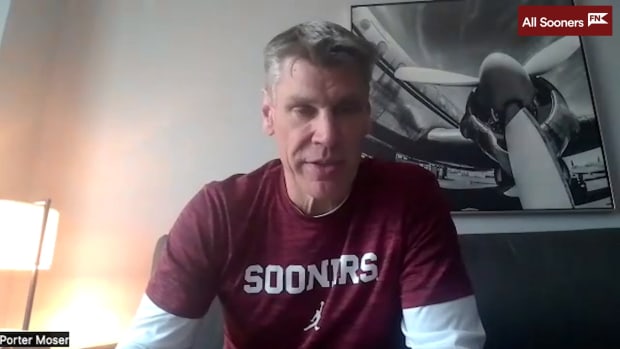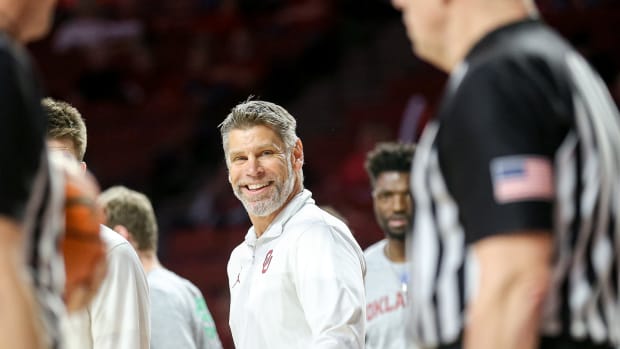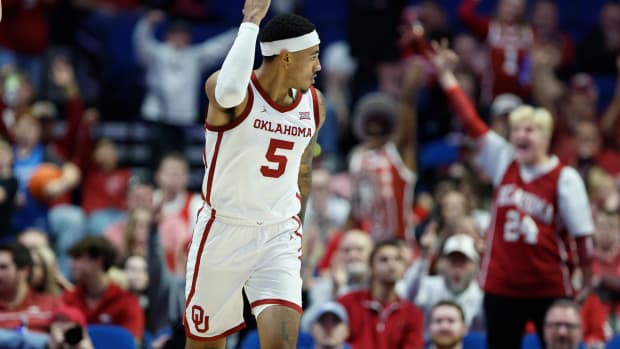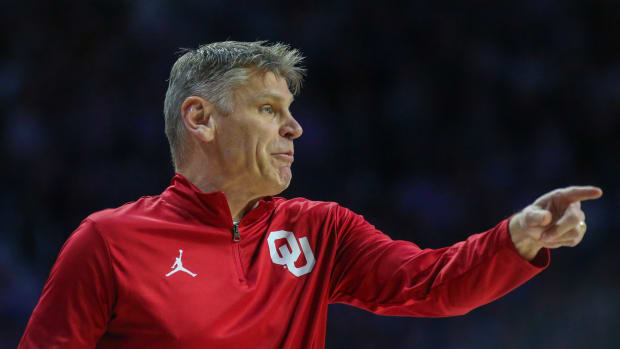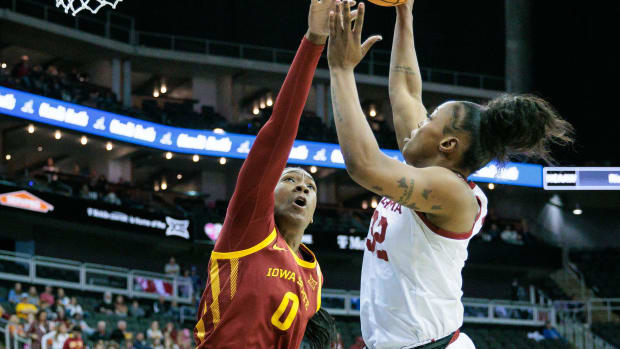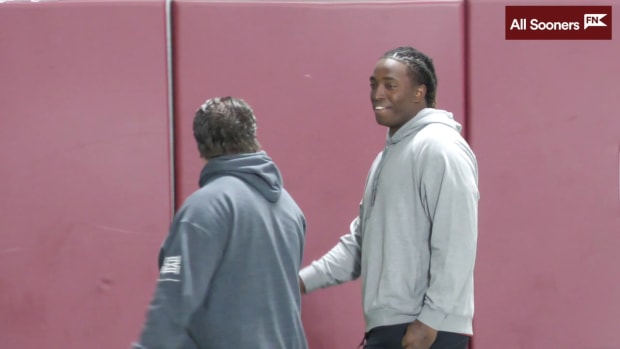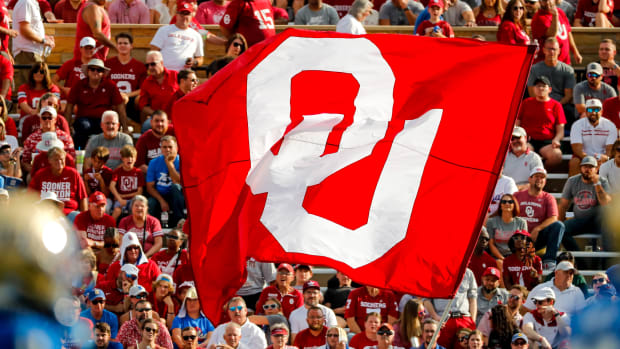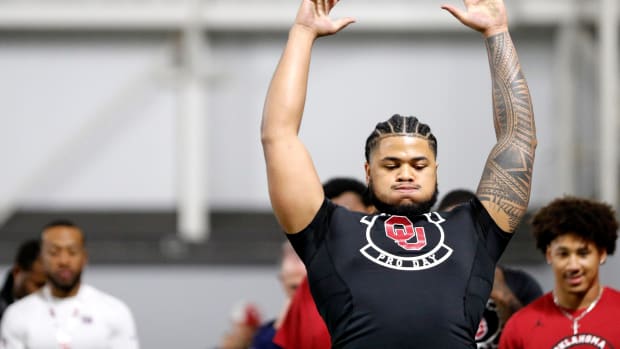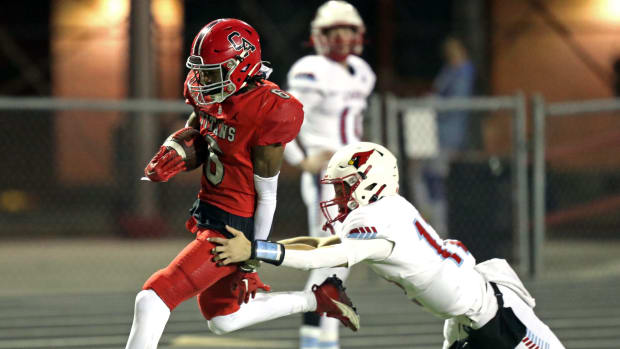Big 12 Financial Setbacks Are Mitigated for Now, But More Challenges Lie Ahead for All Schools
All told, the hit the Big 12 Conference has taken from the Coronavirus pandemic hasn’t been a disaster.
Commissioner Bob Bowlsby offered a forecast in March that the league would lose about $10 million in revenue from the canceled NCAA Tournament, and another $6.6 million in revenue lost from the cancellation of the men’s and women’s basketball tournament.
And yet on Friday, Bowlsby announced at the end of the league’s annual spring business meetings that revenue distribution for 2019-20 would be about $37.7 million per school — only $1.1 million off last year’s distribution.
First, the bad news: the NCAA Tournament shortfall was actually closer to $14 million. Revenue for the current fiscal year had been projected to exceed $40 million per school for the first time.
Instead, the downturn ended the Big 12’s 13-year run of economic growth.
But there was good some relatively news: it could have been a whole lot worse.
“Despite the fact that we had an abbreviated year,” Bowlsby said, “we had a pretty good year.”
Bowlsby previously announced a 10 percent reduction in the league’s annual operating budget. Schools like Iowa State and TCU have seen administration and even coaches take voluntary pay cuts.
And the money lost from this year’s NCAA Tournament will continue to have fallout in coming years, as the NCAA distributes “units” — forecast by USA Today to be around $282,000 for each league victory — paid out over six years. The Big 12 this season likely would have gotten five or six teams into the tournament.
So yes, times are tough all over.
But although the future certainly is more uncertain than ever, the Big 12 has come out OK so far.
“The financial state of the Big 12 just in general is really healthy,” said Baylor’s Mack Rhoades, chairman of the Big 12 athletic directors. “I think the ability to make institutions whole, or very close to whole, has been a big-time positive for every institution.”
TCU chancellor Victor Boschini, chairman of the Big 12 board, said his school has already lost some $50 million because of the pandemic.
“As far as how we’re going to make it up, yeah, we’re scrambling to do that right now,” Boschini said. “We’re cutting costs everywhere.”
Of course, pitfalls lie ahead. But the reality is that football could save everyone, or at least keep ledgers from turning completely red.
Bowlsby said he was “bullish” about the prospect of having a season come fall.
“I’m optimistic that we’ll start the season somewhere around Labor Day,” Bowlsby said. “I think we’ll get a crack at it. I also think that we’ll likely have some interruptions. And we’ll have some moments on campuses and even within athletics departments where we have outbreaks and we’ll have to deal with them in real time.
“So I’m bullish about our opportunity, and more so than I was 30 days ago. … And I hope I’m even more so 30 days henceforth.”
Boschini also said he was “very optimistic” about the football season starting on time.
“I think it’s going to happen,” he said.
But, he cautioned, likely with severe reduction in fan attendance. Many schools are working on projections with 25 percent capacity, 30 percent, 33 percent, 50 percent — and everything in between.
Last week Iowa State announced that it would only sell season tickets this year, and that number would be capped at 30,000 — or, 50 percent capacity at Jack Trice Stadium.
“It’s going to be a huge hit (not having full stadiums),” Boschini said. “In general, we’re losing money by the minute in every area because of that.
“As far as how we’re going to make it out, we’re scrambling to do that right now,” Boschini said. “We’re cutting costs everywhere. We’re not giving raises till January, taking lots of measures like that. All the campuses, I think are doing similar things.”
Said Bowlsby, “I think that’s one of the real challenges we’re facing right now, as the confidence of the public is not real high. And there’s going to be a wait-and-see process. I think there’s going to be a voyage of exploration at some level, and, and we’ll see how it goes.”
Bowlsby, however, also described how knowledge about the virus has advanced since the day he canceled the Big 12 Tournament, and how we've learned to “co-exist with the virus.”
As student-athletes begin to return to campus in phases — voluntary workouts can resume around the conference on June 15, although Oklahoma has circled July 1 as its return date — schools are also incurring additional expenses not previously in the budget, such as administering COVID-19 tests, cleaning and sanitizing the campus, and rearranging facilities to adhere to social distancing guidelines.
For that, the Big 12 has contracted with Infection Control Education for Major Sports to assist.
After the obvious — Will there be games? Will fans be there? — perhaps the biggest question facing the Big 12 and other conferences is what bad news might be coming from TV networks who are saturated in financial setbacks from lost ad revenue?
“We’re planning and expecting to be able to capture that television money,” Bowlsby said. “We can’t do anything other than manage to our contracts right now and then be flexible enough to make adjustments.
“We’re looking for ways to save money in every last thing we do.”
To get the latest OU posts as they happen, join the SI Sooners Community by clicking “Follow” at the top right corner of the page (mobile users can click the notifications bell icon), and follow SI Sooners on Twitter @All_Sooners.
